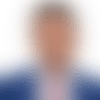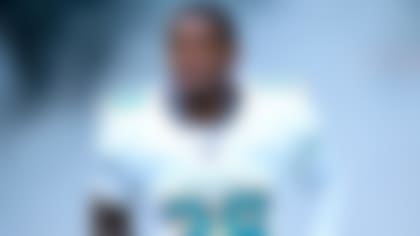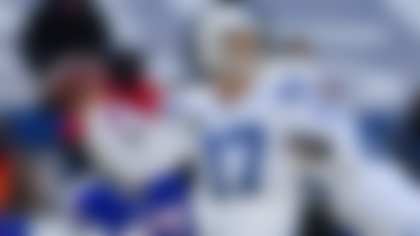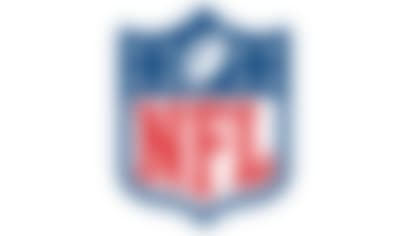IRVING, TEXAS -- Forgive Morris Claiborne if he was shocked. He read the mock drafts, and like everyone else, the LSU cornerback thought he was headed to the Minnesota Vikings or Tampa Bay Buccaneers.
He'd met with those teams, worked out for them, been put under their microscope. It all made sense. Then the Jim Thorpe Award winner slipped a bit. Suddenly, there he was on the phone with Dallas Cowboys owner Jerry Jones, being informed of a possible trade. Suddenly, his entire world had changed.
Darlington: Trades rule Round 1
Trades were the story of the first round. Jeff Darlington explains why more deals in future drafts should be expected. **More ...**
From a family full of Cowboys fans, Claiborne immediately sensed the reaction at his draft-day table in Radio City Music Hall.
"I looked back at my family, and they were like, 'Who is it?' " Claiborne said. "And I was like, 'The Cowboys.' Just to see the look on their face, it's just melted me."
Dallas pulled off a stunner, soaring up eight spots in the first round (in exchange for its No. 14 spot and a second-round pick) to grab Claiborne, the draft's highest-rated cornerback. The Cowboys had done several pre-draft "What if?" exercises, including one that included them grabbing Claiborne. But they knew the chances were slim to select the lock-down corner with stellar ball skills.
"I think the important thing is that we didn't think it was realistic that we'd ever have a chance to get a player like that," Cowboys executive Stephen Jones said.
How did it come together? What kind of homework went into such a blockbuster deal? How much investigating had Dallas done with Claiborne in order to make such a move?
Well, almost none.
Assistant secondary coach Joe Baker spoke with him at the NFL Scouting Combine, and so did some Cowboys scouts. But there was no Valley Ranch visit, no private workout, no extensive tests. There was no warning. No extra medical attention, even though Claiborne has a torn wrist ligament that knocks him out of Organized Team Activities.
Nothing.
"We didn't talk," said Claiborne, the 5-foot-11, 188-pound Shreveport, La., native who was a consensus All-American. "None. Not at all. That's why I was so shocked when I got the phone call."
He wasn't alone. The Cowboys were surprised, too. Make no mistake, they loved Claiborne throughout the process. Their highest-rated cornerback since Deion Sanders, Claiborne was the No. 2 player on their board ahead of Robert Griffin III. And so, after entering the day preparing to take the best of a group of four players at No. 14, owner Jerry Jones called an audible when Claiborne went slipping and sliding into his hands.
"We had decided as late as three days ago that he'd be the only player that we'd go up and get," Jerry Jones said.
The process to prepare for the impossible didn't really begin before Thursday. Cowboys officials had attended LSU's pro day, but that was mostly for defensive end Michael Brockers. They paid Claiborne passing attention at the combine, but why waste time? They knew he was their dream pick, but that it would never happen.
As Stephen Jones quipped, "I don't remember a lot of time we spent with Luck or RG3, either."
The obligatory and exploratory phone calls with the Rams (owners of the No. 6 pick) began Thursday at noon. Stephen Jones took the lead and quickly learned the Rams weren't going to attempt to receive what he called "retail" on their pick. According to the draft value chart, that would be a second-round pick and a fourth-rounder.
Reuter: Winners/losers from Round 1
Which teams improved in the first three hours of drafting? Which squads took a step back? Chad Reuter has winners/losers. **More ...**
Instead, the Rams were OK with just a second. Stephen Jones told them that'd be great, but only for the right player. As coach Jason Garrett reiterated, there was one option, otherwise they would attempt to make a play for either Alabama safety Mark Barron or a few others at the 14 spot.
"(Claiborne) was the only player in our minds that we were going to go up and make a trade to move up in the draft for," Garrett said. "We have some very good contacts at LSU. We feel like we know this player really, really well and the kind of person he is and the kind of player he is and the kind of player he can be."
The first four picks were as expected, with Luck, Griffin, Alabama running back Trent Richardson and USC tackle Matt Kalil coming off the board. At that point, Jones was already talking to Claiborne, informing him of the possibilities. They were still slim.
"They just called and asked me if I wanted to become a Cowboy and I was like, 'Yes sir,' " Claiborne recounted. "And they were like, 'If this trade goes through, and we get a deal, we're going to take you.' "
Then came the news that Jacksonville was trading with the Bucs. The Cowboys knew what that meant. Stephen Jones described the draft room.
"We were hanging in there, then when Jacksonville got it, our guys had some pretty good intelligence what they were coming for," said Jones, who knew the Jaguars were going to select receiver Justin Blackmon. "So we started saying, all set to go because this could happen now. And we didn't know for sure they'd do the trade. Still. All the trades are contingent on getting them done."
Settled on giving up a second-round pick to move up eight slots, the final conversation lasted roughly five minutes. The Rams tried to squeeze a little more out of the 'Boys and get a sweeter deal. Stephen Jones responded, "But that wasn't the deal."
"I know they sacrificed a lot to come up and get me, but I feel like I'm worth it," Claiborne said. "I know my talents, I know what I'm able to do and I feel like I can come in right away and get with the team and learn the system and compete."
Follow Ian Rapoport on Twitter @rapsheet




